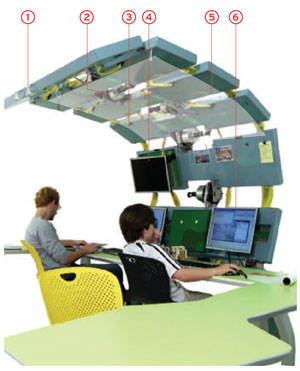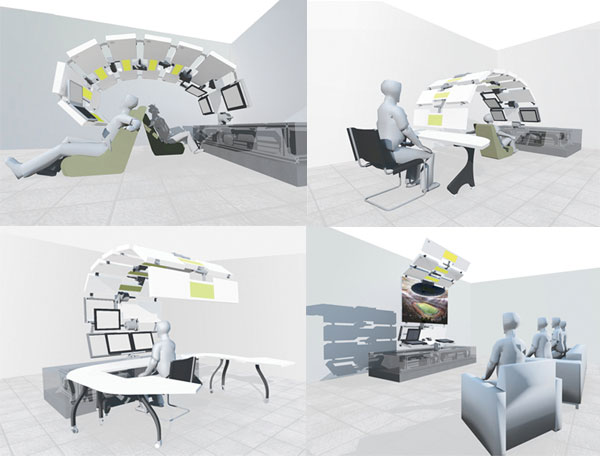Control Freaks
If you haven't noticed, building-control systems are experiencing a bit of a fetish phase right now. For at least the past 100 years, architects and engineers may have conspired to button up architecture, to design tightly controlled spaces according to precise specifications. But presently, we seem to be launching into a loose era of "new controls" prompted by a proliferation of pervasive sensing technologies designed to simplify building performance down to a set of occupant-driven demand-and-response mechanisms. Most of this terrain falls under the sustainable design movement, which has encouraged high-performance buildings with more controls and fine-tuning of systems in pursuit of energy efficiency, indoor environmental quality, and resource conservation. Once unconventional, such systems for opening windows, dimming lights, or lowering the blinds through the Building Management System (BMS) are now off-the-shelf products. Ratti's DWP may take this controls technology to extremes, but in service to a fuller set of architectural possibilities. Expos and fairs have historically given architecture an arena for the exploration of ideas that eventually become part of the larger industry. The DWP may be relatively frivolous, but it doesn't take much to imagine how such technology could be deployed to make buildings respond quickly to climate conditions or occupancy patterns - two concerns that inform much of the controls industry.
Projects like the DWP take preprogrammed logic and respond to local events, with limited control by occupants. That is more or less how most BMS systems continue to operate, but a shift from the building scale to that of the individual is a key aspect of the new controls. Architects like Jennifer Magnolfi are interested in finding more of a middle ground. Her work as a senior designer for Herman Miller's Architecture and Building Technology Systems group led to her collaboration on the book Always Building: The Programmable Environment (2008), which lays out the company's vision of an interactive workplace. To that end, Herman Miller recently introduced Convia, a system incorporating addressable lighting control and plug-load-demand management, among other things, as a first step in creating adaptable work environments where single-use spaces become obsolete. "If a room can expand and contract with ceilings that can become adaptive meeting spaces, it begins to shift the economic equation of managing space from a cost-per-square-foot basis to cost per time of use," Magnolfi says. "The investment in that space is that much more valuable because it addresses many more needs." From a building owner's perspective, it could translate to potentially constructing a smaller building.
 |
Clemson University researchers have designed various configurations of their "Animated Work Environment," such as composing and presenting, or gaming and lounging. Â 1 Â Halogen presentation lights |
| Photo: © IMSA of Clemson University | |
Â

Other manufacturers, such as Allsteel, offer workstations with integrated technology. Some companies, like Australia's UCI, offer task-air delivery in workstation partitions. But few major furniture companies have identified integrated control systems as a key priority, which suggests the market has yet to fully develop.
While not everyone shares her opinion, Magnolfi, an avid iPhone user, sees a general relaxing of privacy concerns, as people expand their presence into the digital realm. As sensing technologies become more refined in the workplace, it will become easier for building owners to precisely track occupancy levels, she says, leading to better space-utilization planning by architects during early design phases. But that is only part of the equation. Honeywell, one of the building-control industry's heavyweights, can already track occupancy levels in buildings using conventional security cameras. Commonly called "blob detection," Honeywell's EBI control system can discern individual bodies by scanning camera footage, thereby approximating occupancy levels with 92 percent accuracy. The data are then used to manage heating and cooling demands in occupied spaces. With such developments, buildings can become hyperactive sensory domains, with ever-shifting landscapes of comfort conditions and fluctuating services.
 |
Convia offers an energy-management platform that integrates lighting, switches, occupancy sensors, timers, and other devices. Energy-consumption data from the components and zones are gathered and displayed on monitors for easy analysis, as shown here in the U.S. Green Building Council (USGBC) offices. Photo: USGBC |









